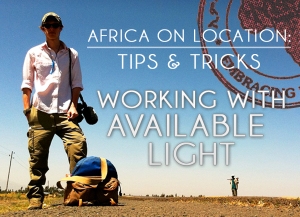And God said… “Let there be light” and there was light. And the Director saw the light, and it was good (enough!)
 Ever since the Big Man up there sparked that huge HMI in the sky, the Sun has been working for (and against!) filmmakers across the world. Shooting outside can be the most rewarding and most challenging part of your job; the imperfections of nature are what make it so perfect to photograph, but those same imperfections can and often do conspire against you.
Ever since the Big Man up there sparked that huge HMI in the sky, the Sun has been working for (and against!) filmmakers across the world. Shooting outside can be the most rewarding and most challenging part of your job; the imperfections of nature are what make it so perfect to photograph, but those same imperfections can and often do conspire against you.
Any filmmaker brave enough to venture from the safety of a controlled film set soon learns that the world is constantly changing; Hot, cold. Wet, dry. Day, night. Noisy, quiet. Windy, still.
To a filmmaker, light is everything. Inside a studio you can control that light, but outside, the light controls you. When shooting exterior scenes, interviews or landscapes you must be flexible and ever observant to the levels of light changing around you.
Shooting with available light (i.e. not supplementary artificial filming light) is primarily a documentary technique, however some feature films; particularly those of Terrence Malick, favour the dramatic aesthetic of this available light.
This beautifully produced tribute video from Joel Walden demonstrates the magic and majesty of Malick’s work and how, with the right eye, nature itself is the most amazing movie effect of them all.
So after that inspiration, here are the 2 GOLDEN RULES for taking advantage of Mother Natures spotlight – the Sun.
1. Work with the light, not against it.
As the old saying goes “If you can’t beat ’em… Join ’em!” and learning to make the light work for you and not against you is a valuable skill to develop for any filmmaker, camera operator or photography. Whenever possible avoid shooting into the sun – i.e. with the sun behind the object you’re filming.
The camera is not as versatile as the human eye and cannot handle the extreme contrast levels that hard backlight from the sunlight produces. Therefore filming a tree, or building, or car (or whatever) against the light will generally result in a severely underexposed or overexposed image (unless you’re going for that silhouette look of course).
So don’t do it, unless you…
2. Use a Reflector
 If you’re filming an actor or interviewee and have them face directly into the sun they’ll be squinting more than a constipated vampire! Instead, position them with their back to the sun and use a Reflector to bounce the sunlight towards their face.
If you’re filming an actor or interviewee and have them face directly into the sun they’ll be squinting more than a constipated vampire! Instead, position them with their back to the sun and use a Reflector to bounce the sunlight towards their face.
A Reflector, generally a Lastolite, is a spring-loaded filming device that is basically a fabric disc that can be used to bounce light around and come in a variety of colours and reflective textures; white, gold, silver etc.
Using a reflector has many benefits, but two immediate ones are that the sunlight is softened by boucing off the reflector (which slightly scatters the rays!) making a more flattering, wrap-around light. The reflector also reduces the intensity of the light (depending on how reflective the reflector actually is!) making it more ‘manageable’ for the actor or interviewee.
Here’s a video of Zander using a Reflector; demonstrating what it does and how it does it. If you don’t have an ‘official’ reflector, fear not – using white card, or polystyrene sheets is also an easy solution. Once you’ve got the hang of what the reflector can do for you, it’ll be a piece of kit you’ll always have ready!












B-Movie Filmmaking
/ April 14, 2014Reblogged this on B-Movie Filmmaking.
LikeLike
reeldealfilmschool
/ April 14, 2014Hi! Thanks very much for re-blogging our posts! Really appreciate it, feel free to do it anytime. Regards.
LikeLike
B-Movie Filmmaking
/ April 14, 2014Haha just trying to spread the word and help out our fellow filmmakers!
LikeLike